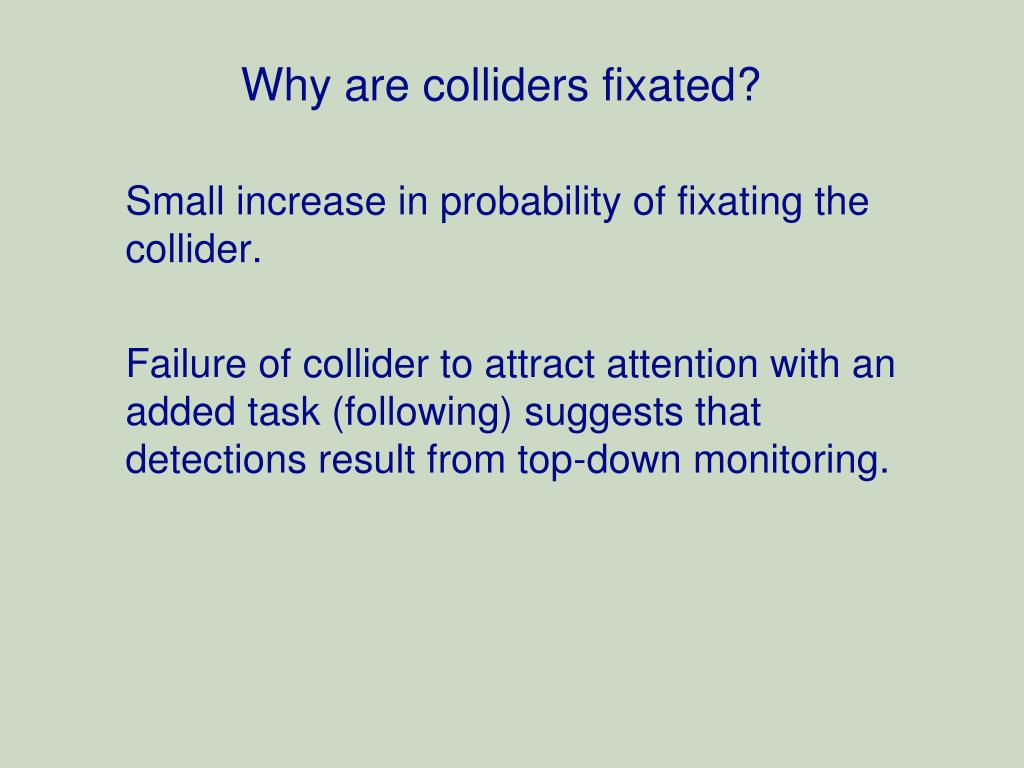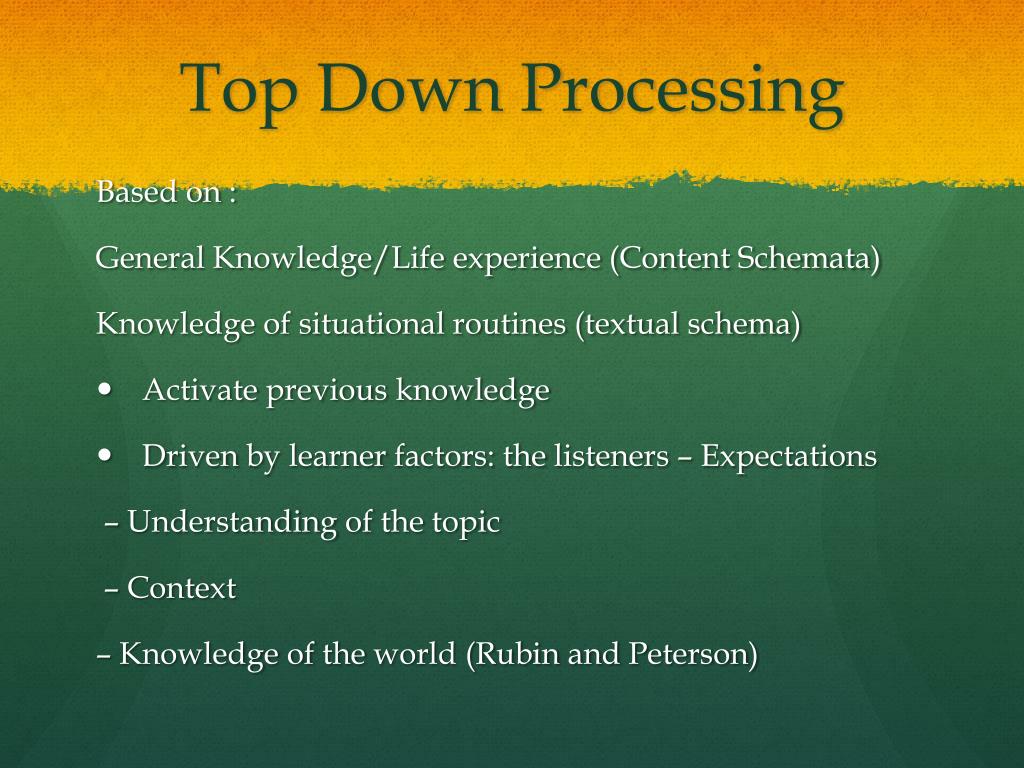

They answer questions like "What future occupation do you want to pursue?", "Do you like hands on learning?" "Do you like group learning?" Then we could take the information we learn from these survey and put the students on the track their answers match up best with. Say we had all students before they entered high school take a survey that could place them on a certain track. Even a survey that the students would take could even be more effective. All they would need is a record of the previous classes adn behaviors in those classes and this could be possiible using the top-down process.

#Top down processing example how to
But what if they could top-down process? What if they could know how all their students worked from day one and not have waste their time learning how to be effective. Then they have to adjust to become more effective in how to teach them in the most effective way.

It takes them a quarter or even a semester to figure out their students and their habits. But can top-down processing help in any other part of life? What about in the world of education? Educators start every year almost every year working with new students and having to bottom-up process. So sure watching film or top-down processing can obviously help in all sports played because you are able to process the information you've already seen easily and are able to pay more attention to finer details quicker. The result was one of the most memoriable upsets in UFC history as Forrest hacked down Rampage on way to a 5 round victory.Īnother example, for a different sport, is the 4 time MVP Peyton Manning and his game football. Based on what he saw Griffin was able to compose a strategy consisting of high kicks to bruise and reduce the power of Rampage's right hand and low kicks to the left leg take away his mobility and base." "In 2008, preparing for his title shot against Rampage Jackson, Forrest Griffin noticed several combinations that formed the core of Rampage's arsenal while watching a film of Rampage's recent fights. Honestly, it's easier going into a game knowing some of the information and it makes it easier to process defenses and offenses since you've seen what they're throwing at you before. In school basketball in the other hand you practice six days a week and have film of the other teams from the last time you played or can get some from a team that's played the team you are about to. In AAu basketball you don't have the chance as you only practice twice a week and don't usually have film on other AAU teams and don't have time. I've experienced both playing AAU basketball and school basketball. The next thing you know the game is over. But how long could this take? This could take a quarter, a half, or even worse. While playing you'd have to figure out their plays, defenses, and best players on the fly. Now on the other hand, if you don't watch film on the team before your game, you are experiencing bottom-up processing. Once you know these things, you can focus on the details of how to stop their plays and best players and how to score on their defense. That is the plays they run on offense, what defense they run, and their best players. You can understand the large concept of the team. If you watch film of a team before you play them you are able to top-down process. It doesn't really matter what you originally see in the image, you will look it over again to see if your view was correct or if you missed something.Ī real life example that I have experienced of top-down processing and bottom-up processing is watching film during basketball seasons. What t is essentially is goal- based eye movement through the image. This is an important image in terms of graphic design because it really relates to the efficiency of the design and how the information is translated. There is a very high level of attention for such a simple image as we try to grasp what is going on. This is really the perfect example of constant linking and relinking of visual information in a top-down process. Depending on whether the black or white is seen, the brain will interpret whether two faces are shown or a vase. This optical illusion operates on our visual perception of contours.


 0 kommentar(er)
0 kommentar(er)
